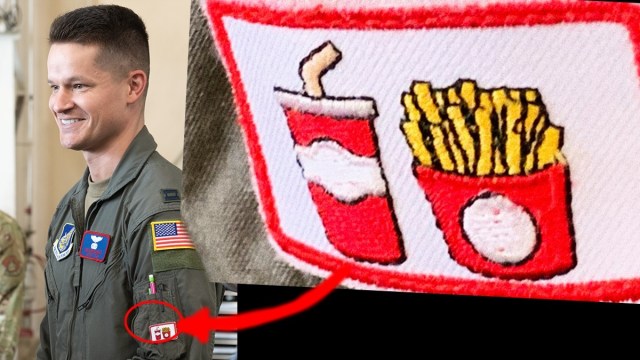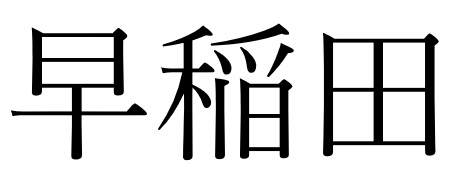The hidden meaning of the U.S. Air Force’s “shake and fries” patch in Japan

Special technique to help newcomers acclimate to life in Japan gives Japanese Twitter users a smile too.
For newly arrived foreigners in Japan, navigating the country can be a challenge. Even once you get over the difficulty of remembering place names themselves in a language unfamiliar to you, there’s still the matter of remembering the kanji characters they’re written with.
If you don’t already have a background in Japanese linguistics, oftentimes it’s helpful to remember/recognize kanji by associating them with a picture of some kind. For instance, when I was doing study abroad, I had a classmate who remembered to get off the subway at Waseda Station by thinking of it as “the one with Superman,” since the first kanji reminded her of the comic book superhero flying through the sky.
▼ Look, up in the sky! It’s a bird! It’s a plane! No, it’s…Waseda!

But an even more thorough example was recently shared by the U.S. Air Force’s official Twitter account for Yokota Air Base.
▼ “Quiz: This morale patch reminds Yokota Air Base personnel of a two-kanji name place that they often see. What is it?”
問題:このモラルパッチは横田基地の軍人がよく見かける地名の漢字2文字から連想したものです。さて、その漢字はなんでしょうか? pic.twitter.com/ks5zKIutPI
— Yokota Air Base 横田基地 (@YokotaAirBase) September 4, 2022
Yep, that’s a fast-food beverage cup and container of French fries, not some sort of military ordinance. And no, they’re not stand-ins for “Yokota” (which is written in kanji as 横田), though they are representing the name of somewhere near the base in western Tokyo. Any guesses?
The answer is…
.
.
.
.
.
.
.
.
正解は「立川」です。
— Yokota Air Base 横田基地 (@YokotaAirBase) September 5, 2022
から横田基地に赴任した軍人が、電車に乗って都内へ行くとき、最初に覚えなければいけない漢字が「立川ゆき」です。
昔から、軍人は「立川」を"Shake and Fries"と漢字を象形化して覚えていました。 pic.twitter.com/1WgyAjlIwB
…Tachikawa!
Unlike some kanji, the characters for Tachikawa, 立川, are pretty straightforward. The first, 立, means “stand” or “rise,” and is meant to be a picture of a man standing on the ground. The second, 川, means “river,” and shows flowing currents of water. Both of those visual renderings are a little on the abstract side, though, and to some of the non-linguistically trained eyes at Yokota Air Base, they look closer to a milk shake and an order of fries.
As to why it’s important for those stationed at Yokota to be able to recognize the kanji for Tachikawa ASAP, Tachikawa Station is the closest major rail hub to the base, and often the station where you’ll need to transfer if you’re heading into downtown Tokyo from Yokota or on your way home, so being able to spot the “shake and fries” is a necessary life skill.
Obviously, native Japanese speakers/readers don’t need this mnemonic device, but Japanese Twitter commenters were all smiles after learning about it.
“What a fun way of thinking! I’d never forget this!”
“Smart idea to be able to recognize them right away.”
“Haha it totally looks like a shake and fries to me now.”
“Please, somebody, make stickers of this!”
“I’d heard that kanji look like pictures to people who don’t read Japanese. Turns out it’s true!”
“That’s really funny and clever.”
“Useful idea!”
“Oh wow, I just saw one of those patches yesterday! So that’s what it was.”
Morale patches, by the way, aren’t official uniform components, and are instead optional gear accents, so you won’t see each and every person stationed at Yokota sporting one. In recent years it’s also become increasingly common for rail networks to list the names of stations on platforms and transfer signs in both kanji and the English/Latin alphabet, so the food-and-drink association isn’t quite as critical as it once was. Yokota’s tweet says that the “shake and fries” technique is one that base personnel have been using since long ago, though, and it lives on as a sign of comradery among those in the know.
Source: Twitter/@YokotaAirBase (1, 2, 3)
Top image: Twitter/@YokotaAirBase
Insert image: SoraNews24
● Want to hear about SoraNews24’s latest articles as soon as they’re published? Follow us on Facebook and Twitter!
Credit:

0 comments: